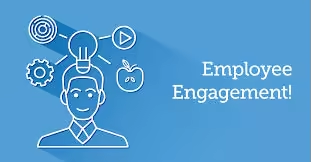The quality of a company’s workforce can be a determining factor of whether a company will be successful or not. This thus makes attracting quality hires one of the main factors underpinning organisational performance. With the introduction of online recruiting sites and technological innovation, there is a revolution in how companies now attract expertise. Organisations have the task of identifying and attracting candidates that best fit the job competency profile, as well as, the company culture and budget. To meet all these criteria using the traditional methods can be both time-consuming and costly, not to mention prone to human bias and errors.
This has led many top companies to move away from the old and familiar ways of recruiting, migrating to data-driven approaches. In addition to finding the right person for a job, a number of top companies are now using data to identify talent that will assist them in meeting both their long-term and short-term goals. The way in which the skills of candidates are matched to positions can have long-term and short-term implications.
Organisations can implement data-driven approaches, even from the planning stages of the recruitment process. Companies have an archive of resumes received from applicants who have applied for work at some point
in the past. Some of these resumes may actually still be valid, with some applicants still being able to satisfactorily fill existing vacancies in the organization. This is where machine learning shines. Organisations can use machine learning to spot qualified applicants in the databases and then suitably match them to existing vacancies. The system can then go on to contact the candidate and send through the necessary details.Organisations can make use of machine learning to search the internet and make sense of unstructured data on recruitment and professional profile platforms, as well as, social media. The potential of such models rooting out and selecting the best profile within a short time span is significant. Furthermore, some algorithms can anticipate the likelihood of candidates considering a change of career.
Machine learning algorithms can actually also assist hiring personnel in filtering the very best applicants out of a glut of applicants. The algorithms can pick applicants with significant potential and look for behavioural characteristics that will ensure the applicant fits into the culture of the organisation. Intuit, for example, which employs thousands of employees annually, developed an algorithm driven by machine learning to assist in matching and ranking potential candidates to vacant positions, based on skills prevalent in top performers.
Organizations will search for certain expertise, characteristics, internet presence, religion etc., during the recruitment process. This can be a tedious activity if conducted manually. It can be time-consuming and the Human Resources Manager can end up making errors from exhaustion. Machine learning models help to pick the different attributes that the company requires in a short space of time. Applicants can then be prioritized based on the attributes they sought after.
In 2018, Nikkei, one of the world's largest financial newspapers, reported that a Japanese company named Recruit Holdings uses employee information, including personality tests, working hours and performance evaluation, etc., to identify individuals most likely to quit their jobs within the following six months. This allows managers to then sit down and hear any concerns and suggestions they may have. Similarly, another company, Recruit Sumai, makes use of personality traits to classify departments where new hires will thrive, as well as, identify the best person to train them.
Recently machine learning models that analysis videos have been vastly improved. These are implemented by observing the facial expressions of candidates and drawing conclusions to identify a number of things. HR Managers can use video analysis to identify a candidate's personalities and behaviours and evaluate whether they can suit their culture. Vodafone uses video interviews driven by machine learning to evaluate candidates. They test a candidate's suitability through body language and facial cues to voice pitch and speech cadence, over more than 10 000 parameters. The leading candidates are then invited to an interview face to face.
In terms of what data-driven models and artificial intelligence can do in the recruitment process, there is huge potential. With the increasing power of computers, data processing and analytical awareness, data-driven recruitment initiatives are advancing at a rapid pace. In 2018, the late Professor Hawking said, “Our future is a race between the growing power of our technology and the wisdom with which we use it. Let’s make sure that wisdom wins.” Hence companies need to consider the potential benefits of such a transition.
Nyasha Mukechi is a Consultant at Industrial Psychology Consultants (Pvt.) Ltd; a management and human resources consulting firm.
Phone +263 4 481946-48/481950 or cell number +263 773274381 or email: nyasham@ipcconsultants.com or visit our website at www.ipcconsultants.com

